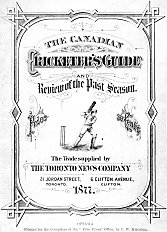
 |
National Library News |
by Michel Brisebois,
Rare Book Curator,
Research and Information Services
 |
Exhibitions at the National Library of Canada are designed to showcase selected items from the collections and to invite the public to partake in an enjoyable and educating experience. Although most items in the National Library’s collections are available to scholars and the general public for consultation, the grouping of such items under a theme, accompanied by introductory text and explanatory captions, has another purpose, that of telling a story.
This year’s main exhibition called for a retrospective look at Canadian printing and publishing. It had to be general, non-technical and, therefore, accessible to all. Additionally, it was to reflect as much of the Canadian printing heritage as possible. Rather than making it a conventional history of printing, or grouping unrelated "treasures" of the Library, I attempted in "Impressions" to highlight the books, pamphlets, broadsides and newspapers printed in Canada and used by Canadians in everyday life to learn to read and count, to travel, to master a trade, to worship, to heal, to sway voters, to relax or simply to be informed of events in the world around them. I thought that visitors would feel an affinity with objects they might have owned, had they lived in those times.
The printed objects were to be grouped under the following headings: Children’s Literature and Education; Immigration and Transportation; Household and Family; Agriculture and Trades; Judicial and Political; Newspapers and Magazines; Leisure and Literature; Religion; Health; and finally, Book-Object. The order of the themes loosely reflected the chronological evolution of activities and interests in a person’s life. Obviously many thousands of items were potential candidates, the majority having never been exhibited before.
After conceptualizing the exhibition, the curator faces the most difficult and time-consuming task of all, selecting the appropriate items. Without going into the tedious details of the methodology used in the selecting process, suffice it to say that the first step was selecting works which suited the theme, and then choosing an appropriate copy, if multiple copies were available.
For all books and pamphlets, an opening (a specific page) had to be chosen, representative of the work or showing the hand of the owner. Copies showing a link to previous owners such as signatures, ex-dono or annotations became obvious choices. Another consideration was to give a good geographical representation of printing throughout Canada, while keeping in mind that printing in British Columbia began 100 years after its establishment in Halifax. The diversity of Canada’s linguistic heritage also had to be shown. An ideal balance is impossible to achieve, and the curator must accept that his personal interests and favourite themes will influence his choices. An exhibition curated by one person should be as objective as possible but cannot, and should not, be impersonal.
Most of the books which make up "Impressions" were selected from the Rare Book Collection (and a few from the General Collection), while others were taken from a pre-selection made by curators of the Music Division, the Jacob M. Lowy Collection, and the Newspaper Collection. Once the selection is made, the curator faces the next challenge, which is to write, in both official languages, bibliographical descriptions, explanatory captions, and an introduction for each section, summarizing the historical context.
While I disagree with the often-held opinion that visitors to exhibitions do not read captions, I do subscribe to the view that the captions should be informative and concise, encouraging the visitor to learn more from other sources. This type of writing requires much background reading and numerous drafts for each caption and introduction.
In an exhibition such as "Impressions", the items have to be in a context which will explain their appearance and evolution. In order to "tell the story" of certain genres such as textbooks, the curator must familiarize himself with the history of education in Canada, import laws, copyright, and, of course, publishing practices such as importing stereotype editions and replacing title pages of books printed in Europe or the United States with ones showing Canadian publishers. These considerations must be accurately summarized and simplified for the purpose of a relatively short caption.
The curatorial role that I assumed for "Impressions" has provided both immediate and sustained satisfaction. As for a lasting impression, that remains to be savoured.